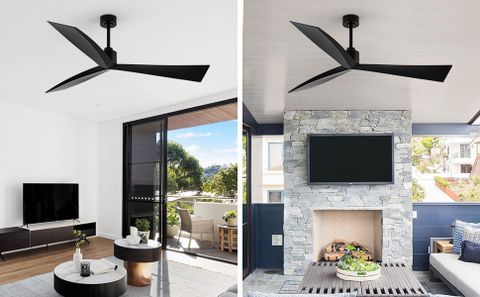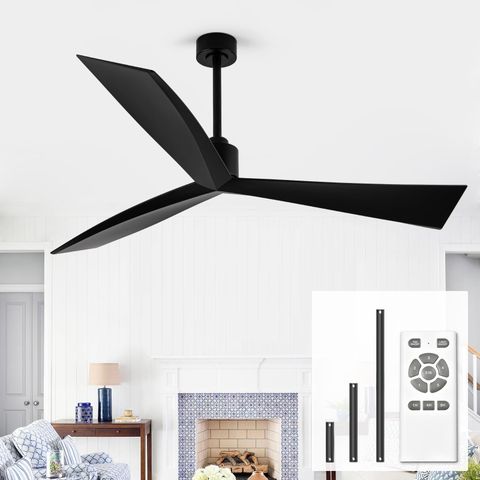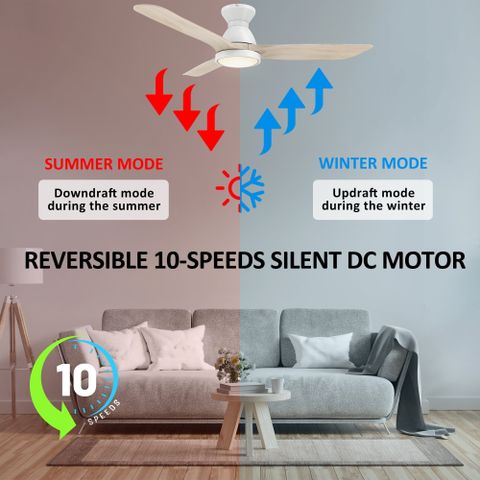Picture this: you’re hosting friends for dinner under the stars, the temperature is climbing, and your guests are starting to sweat. You’ve got your grill going, your drinks are ice cold, but something’s missing. A good outdoor fan could be just what you need to keep everyone comfortable while maintaining that perfect atmosphere. But how do you choose the right one? Let’s dive into the world of outdoor fans, focusing specifically on the sleek and sophisticated black matte option.
Outdoor entertaining has become a cornerstone of modern lifestyle, especially as we spend more time enjoying our homes. Whether it’s a casual weekend barbecue or a formal dinner party, having the right tools to maintain comfort makes all the difference. Fans play a crucial role in this equation, providing relief from heat and wind while enhancing the overall aesthetic of your space. When it comes to outdoor fans, the black matte finish has gained popularity for its understated elegance and durability. This isn’t just about looking good – it’s about finding a fan that will serve you well for years to come. The challenge lies in choosing the right one that balances performance, style, and practicality.
Understanding Black Matte Fan Characteristics
Black matte fans offer a unique blend of visual appeal and practical benefits that make them stand out in outdoor settings. Unlike glossy finishes that can show fingerprints and scratches easily, matte surfaces provide a sophisticated look that ages gracefully. The finish absorbs light rather than reflecting it, which means fewer glare issues during evening entertainment. These fans typically feature a non-reflective surface that doesn’t attract attention or create unwanted highlights. Think of it like choosing a well-made leather jacket versus a shiny one – the matte version often looks more refined over time. Many manufacturers now offer these fans with rust-resistant materials and weatherproof components designed specifically for outdoor conditions. The color itself is versatile, complementing both traditional and contemporary outdoor designs without clashing with existing decor elements.
Size and Coverage Considerations
The size of your outdoor space directly impacts the fan selection process. For small patios or decks, a ceiling-mounted fan measuring 36-42 inches might suffice. However, larger areas like expansive backyards or covered porches require bigger fans, often ranging from 52-60 inches in diameter. Consider the square footage of your entertaining area and calculate accordingly. A general rule of thumb suggests covering 75 square feet per fan, though this can vary based on ceiling height and room configuration. Some fans come with adjustable blades or multiple speed settings to maximize coverage efficiency. The placement matters too – fans should be positioned high enough to avoid direct airflow on people but low enough to effectively move air. It’s worth noting that larger fans move more air but may not always be necessary if your space is smaller. Sometimes a smaller, more focused fan provides better results than a massive unit.
Material Durability and Weather Resistance
Outdoor fans face constant exposure to elements, making material selection critical. Aluminum blades are popular because they resist corrosion and maintain their shape even after years of use. Some fans incorporate stainless steel hardware, which offers superior strength and longevity. The motor housing needs protection from moisture and temperature fluctuations. Look for fans rated for outdoor use with appropriate IP ratings (Ingress Protection) that indicate resistance to dust and water. Some models feature powder-coated finishes that enhance durability against weathering. Manufacturers often test their products under various conditions to ensure they meet quality standards. A fan that survives harsh winters and scorching summers is worth the investment, especially when considering replacement costs. The cost difference between basic and premium materials becomes apparent over time through reduced maintenance and longer lifespan.
Installation Requirements and Mounting Options
Before purchasing, assess your installation requirements carefully. Ceiling-mounted fans work best when there’s adequate clearance above the seating area. Consider whether you have a standard ceiling or a more complex mounting situation. Some fans require professional installation, particularly those with heavier blades or special mounting brackets. The electrical setup matters – ensure proper wiring and possibly an electrical box designed for outdoor use. Wall-mounted options provide flexibility when ceiling installation isn’t feasible. These typically offer different blade configurations and mounting heights. Some fans come with remote controls or wall switches for convenient operation. Check if your existing electrical infrastructure supports the chosen fan model. Not all fans are compatible with every type of ceiling structure. Take measurements carefully before making a decision, and consider consulting with professionals for complex installations.
Energy Efficiency and Operating Costs
Modern outdoor fans prioritize energy efficiency without sacrificing performance. LED lighting integrated into fans can significantly reduce power consumption compared to traditional bulbs. Variable speed controls allow you to adjust airflow according to weather conditions and comfort levels. Some fans feature smart technology that can be controlled via smartphone apps, offering additional convenience and energy savings. The motor type affects efficiency – DC motors generally consume less power than AC motors. Look for Energy Star certified models that meet government standards for energy efficiency. Operating costs add up over time, so choosing a fan that runs efficiently is wise. Fans with timer functions can automatically turn off when not needed, preventing unnecessary energy waste. Consider the fan’s CFM rating (Cubic Feet per Minute) to gauge airflow effectiveness. Higher CFM numbers usually mean better cooling performance, but also potentially higher electricity usage.
Maintenance and Longevity Factors
Regular maintenance extends a fan’s life significantly. Most outdoor fans benefit from periodic cleaning to remove dirt and debris that accumulate on blades. Some models feature easy-to-remove blades for thorough cleaning. Lubricating moving parts according to manufacturer guidelines helps prevent wear and tear. Check electrical connections regularly to ensure safety and optimal performance. Weather exposure can cause corrosion over time, so inspect hardware frequently. Some fans require seasonal adjustments or winter protection. The warranty terms often reflect manufacturer confidence in product longevity. Read warranty details carefully, including what’s covered and for how long. Fans with modular components make repairs easier and more cost-effective. Keeping a maintenance schedule helps identify potential issues before they become major problems. Proper care ensures your investment continues delivering comfort for many seasons to come.
Choosing the right black matte fan for your outdoor entertainment area involves balancing several important factors. From understanding the characteristics of matte finishes to considering installation requirements and long-term maintenance, each aspect plays a role in your final decision. The right fan should enhance both comfort and aesthetics while standing up to the elements. Whether you’re planning a small backyard gathering or a large outdoor event, investing in a quality fan pays dividends in comfort and enjoyment. Remember that the most expensive option isn’t always the best choice – focus on features that match your specific needs and usage patterns. Taking time to research and consider all factors leads to a more satisfying purchase. With proper selection and care, your outdoor fan will provide reliable service for many entertaining seasons ahead. The key is finding that perfect balance between form and function, ensuring your outdoor space remains inviting regardless of the weather outside.














